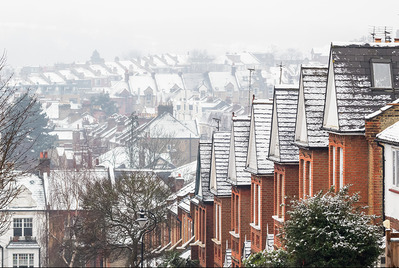Yields are the most common figures used to compare properties in the lettings industry. Are you getting the best one for your property? Let us run through five ways to make sure you are.
Firstly, what even is a yield? It's the annual revenue or profit calculated as a percentage of a property’s value and it’s a good way to see how profitable a property is, i.e. how good it is as a buy to let investment.
Once you’ve got a yield figure for your property, you can compare it against other buy to lets and various different investments, but you need to be aware that there are different ways of doing the calculation, giving different ‘types’ of yield. For more information on yield calculation, please refer to our newsletter on the subject.
For now, here are five key steps to ensure your investment is as profitable as possible:
1. Improve the standard of the property
If you’ve owned the property for a while and haven’t yet updated it, it might be worth investing some money to align it with current standards. Although you’ll probably always be able to find a tenant (because of the general lack of available properties) you won’t be getting the best ones, or the highest rent. If you want to maximise your rental income, the property’s got to be in the best possible condition – that’s the fabric of the property, the décor and any furnishings.
In our 2017 tenant survey, respondants put property condition and cleanliness as the top reason for choosing a rental property – scoring above value for money.
Because it’s going to take time to carry out the work and you ideally don’t want a long void period, the best thing to do is speak to your current tenant because they may happy for the work to be done while they’re there. Ask if they’re planning to take any holidays and whether you could do the updates while they’re away. They’ll probably be delighted to accommodate you if they’re getting a much-improved home and it means you won’t lose rental income, on top of the cost of the work.
Obviously, you’ve got to keep the cost of the refurb in line with the rent you’re going to be able to achieve, so don’t go fitting marble worktops in the kitchen unless you’re letting to city professionals or at the high end of the market!
2. Could you offer extra services?
One of the questions we asked tenants in our survey was which ‘extras’ they’d be prepared to pay more for and how much more. Interestingly, although most landlords are against allowing pets, that was top in the list! Here are the top 5 ‘money-maker’ results, showing the percentage of tenants who were interested and the amount of extra rent they’d pay each month:
Ready furnished |
6% / £36 |
Cleaning service |
13% / £28 |
Pets |
28% / £24 |
Garden |
16% / £24 |
Cable / satellite TV |
14% / £24 |
High-speed internet was also a very popular request, with 21% of respondents prepared to pay £19 more for the service.
Overall, we found that tenants would pay an average of £20-£25 a month more for extras, so it’s worth working out how much each one would cost you and what you’d make back in rent over, say, 3-5 years. And remember, it’s not just about the extra rent. The more your property can offer, the less likely you are to have voids and the better quality of tenant you’ll attract.
3. Create extra living space
If you’ve got extra space, e.g. a loft or garage, or there’s potential to extend, it’s worth enquiring whether it's finanically logical to expand the accommodation. Our lettings and sales teams can work together to help you understand what extra rental income you could get and by how much the house price could increase if you converted or extended. Even if it wouldn’t make much difference to the rent you could charge, it might be a good longer-term investment in terms of capital increase.
4. Convert a single let property into an HMO (room lets)
This is probably the most extreme change you can make. You’ll need to do a lot of research and be prepared to invest a fair amount of capital, but you should be able to more than double the level of rental income. It’s also more work to manage an HMO, but you may decide that the financial rewards are worth it.
As long as you plan well ahead and you don’t hit any structural problems or issues with the fabric of the property, it’s possible to turn around an HMO renovation in one to two months. But there’s a lot to consider before you move ahead, including:
- Your mortgage and insurance. You need a specific mortgage product for an HMO, so get in touch with your lender to see what their process is for changing product. They’ll need to revalue the property to confirm the achievable room rental rate and there are likely to incur other fees. And most insurers don’t cover HMOs, so you might need to change your provider and your premium with almost certainly increase.
- The local council’s HMO policy. You’ll need to check whether you’re even allowed to operate the property as an HMO, whether licensing is required and what planning and building regulations the works will need to satisfy (putting up/taking down walls, extending, putting in additional bathrooms, etc.)
- The current tenancy. You’ll need to give your current tenants notice and be prepared in case they refuse to leave and you have to evict them.
- Increased regulation. HMOs have more health and safety regulations than single lets, so find out from your local council and fire service what you need to do to make sure you’re letting legally, e.g. electrical checks and fitting fire doors.
- Furnishing. HMOs are almost always fully furnished, right down to chopping boards, a vacuum cleaner and an iron. There are companies that specialise in providing furnishing packages for HMOs, which can prove cost-effective and save you a lot of time.
5. Review your mortgage regularly
Your mortgage payments are likely to be your biggest monthly outgoing, especially if you’ve got a high loan to value, so this is where you could make significant savings. New products and discounted deals come to the market all the time, so make sure you consult a broker every year or so, to make sure the product you’re on is still competitive, or whether it’s worth switching to a better one.
If you don’t already have a broker or you’d like to compare the products you’ve been offered, our consultants will be happy to help, with a free initial consultation. Call 0800 470 1182 to make an appointment or you can contact us via our website https://www.your-move.co.uk/mortgages/mortgage-enquiries *.
Depending on what changes you make, it could mean slightly more rent within your existing target market, or you might be able to appeal to a different type of tenant who’s prepared to pay much more rent. For example, you might do a full refurb that takes the property into the professional/corporate market. Even if you can only afford to make little changes, remember that it’s not all about the month-on-month rental return. The better and more comprehensive the services you can offer, the longer your tenants are likely to stay and the less likely you are to suffer void periods. And this all goes towards boosting your yield.
If you have any questions about what's been discussed then contact your local branch and a team member will happily help you.
*YOUR PROPERTY MAY BE REPOSSESSED IF YOU DO NOT KEEP UP REPAYMENTS ON YOUR MORTGAGE.
Our initial mortgage consultation is free. We will charge a fee between £399 and £999 that is payable on application. The amount we will charge is dependent on the amount of research and administration required. We reserve the right to charge a subsequent fee of £99 for each further application that may be required.
The Your Move Content Marketing Team



